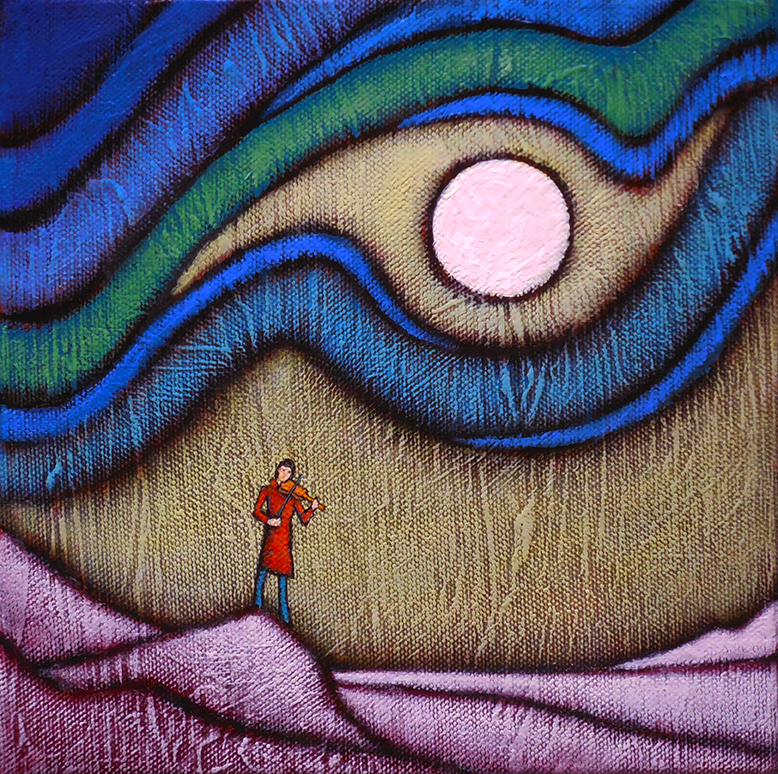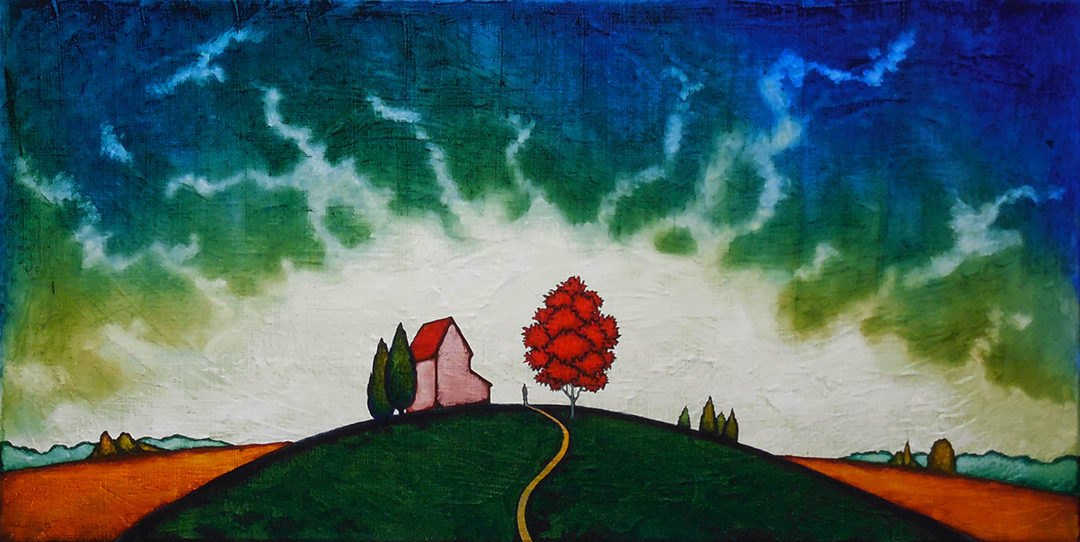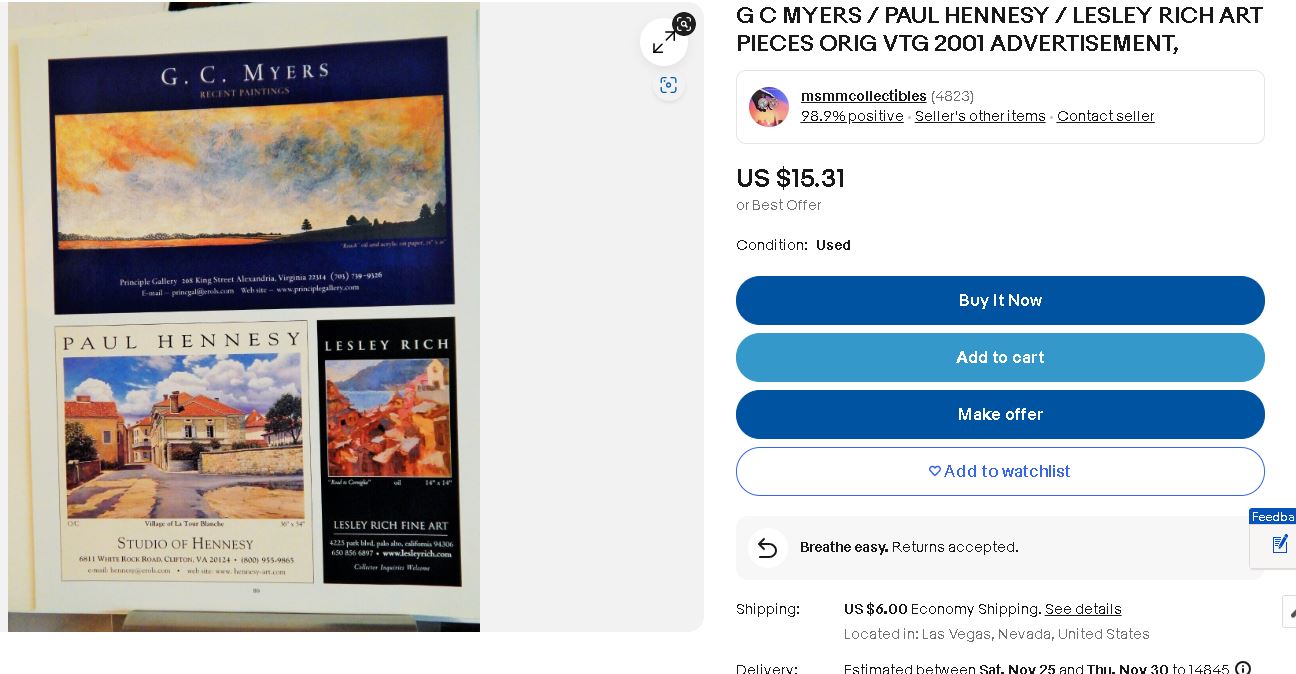
The Attuning– Part of Small Works at Principle Gallery
Hope is a diagnostic human trait, and this simple cortex symptom seems to be a prime factor in our inspection of our universe. For hope implies a change from a present bad condition to a future better one. The slave hopes for freedom, the weary man for rest, the hungry for food. And the feeders of hope, economic and religious, have from these simple strivings of dissatisfaction managed to create a world picture which is very hard to escape. Man grows toward perfection; animals grow toward man; bad grows toward good; and down toward up, until our little mechanism, hope, achieved in ourselves probably to cushion the shock of thought, manages to warp our whole world.
Probably when our species developed the trick of memory and with it the counterbalancing projection called “the future,” this shock-absorber, hope, had to be included in the series, else the species would have destroyed itself in despair. For if ever any man were deeply and unconsciously sure that his future would be no better than his past, he might deeply wish to cease to live.
In saying that hope cushions the shock of experience, that one trait balances the directionalism of another, a teleology is implied, unless one know or feel or think that we are here, and that without this balance, hope, our species in its blind mutation might have joined many, many others in extinction.
–John Steinbeck, Log From the Sea of Cortez
In 1940, John Steinbeck took part in a 6-week scientific marine expedition with his good friend and marine biologist, Ed Ricketts. The purpose was to collect and collect marine specimens from the Gulf of California, also known as the Sea of Cortez. The book is a journal of the trip along and much of it is gleaned from Rickett’s trip diaries. Ricketts, who died in a car/train crash in 1948, had a lot of influence on the thinking and philosophy of Steinbeck. Much of it shows up in this book.
I was struck by the passage above, with its representation of our lengthy memory as a mutation of our species. With the knowledge that we have a long history comes the realization that we have a future and with that, the hope for a chance to improve our condition.
Speaking from a scientific perspective, Steinbeck/Ricketts suggests that hope is an inborn survival mechanism of humans and has been the propelling force for all progress, as well as the one trait we possess that has kept us from going extinct. Our awareness of the past and our dissatisfaction with the present drive us to strive for betterment in the future.
Hope.
There is another section that describes how hope is also a strong indicator of our incompleteness as a species. Turns out, we are a far from final product. Who’da thunk?
We have made our mark on the world, but we have really done nothing that the trees and creeping plants, ice and erosion, cannot remove in a fairly short time… In spite of overwhelming evidence to the contrary, the trait of hope still controls the future… Man in his thinking or reverie status admires the progression toward extinction, but in the unthinking stimulus which really activates him he tends toward survival. Perhaps no other animal is so torn between alternatives. Man might be described fairly adequately, if simply, as a two-legged paradox. He has never become accustomed to the tragic miracle of consciousness. Perhaps… his species is not set, has not jelled, but is still in a state of becoming.
As one who often feels far from complete and still in a state of becoming, it gives one a lot of fuel for thought. Hope for the future and awareness of the past as counterbalances for survival are themes in much of my work. And thinking.
I have to point out that this is a very short and incomplete rehashing of a completer and more superior article from Maria Popova and her marvelous blog, The Marginalian. Please check it out and become a subscriber. Really good stuff. It will give you valuable knowledge along with a healthy dose of hope and awareness.
And we know that is already part of us, right?






 Gratitude is a sickness suffered by dogs.
Gratitude is a sickness suffered by dogs.



